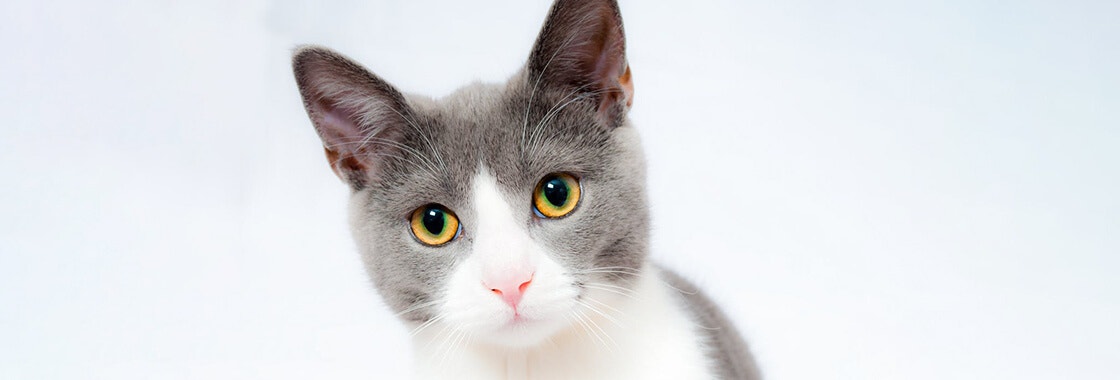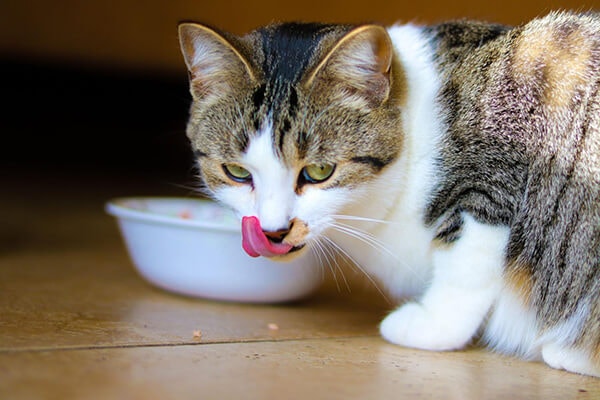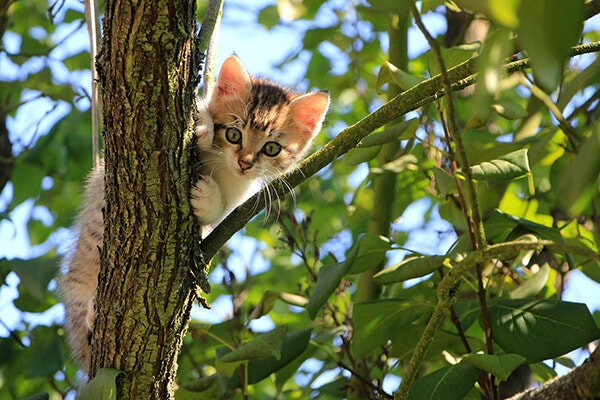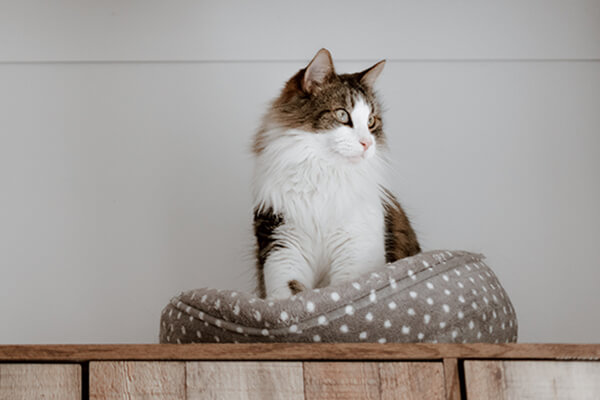Wet Cat Food vs. Dry Food Cat Food


Share
Wet food vs dry food is the feeding challenge faced by every cat owner. Is it better to choose a textured wet food akin to the prey cats would catch in the wild, or opt for the convenience of dry kibble? Does your greedy cat suit regular wet food mealtimes to prevent overeating, or are they happier grazing on dry food as a 'little and often' snack? We look at all the pros and cons so you can decide whether to feed your cat wet or dry food or choose a mixed diet for the best of both worlds.
What are the differences between wet and dry cat food?
Making a decision about feeding your cat wet or dry cat food is complicated but two of the main factors to consider are moisture content and nutritional values. As wet food contains up to 80% water, it is better at keeping your cat hydrated, especially as cats are often not great water drinkers. Wet cat food can also contain a higher level of protein, which is suited to cats as carnivores, and mirrors the nutritional content of prey they'd naturally eat. Dry foods contain a high carbohydrate content, which is non-essential in a cat's diet but is low in cost and a good source of energy for your cat. Most are also formulated to be nutritionally balanced, with around 25% protein. This said, some experts believe a higher-carb diet can lead to obesity and diabetes in cats prone to these diseases. Your feline's eating habits, dietary requirements and age are also important factors when thinking about wet cat food vs dry cat food, so it's worth exploring the differences between the two in more detail, using our charts below.
Benefits of dry cat food
Dry cat food can be less messy at feeding times and is easier to store in between meals. It particularly suits cats who like to graze throughout the day under a 'free-feeding' regime.
Key Dry Food Benefit | Benefit Explanation |
Convenient feeding | It only takes a moment to fill up your cat's bowl with dry food, without the need for washing up. If you are feeding your cat a controlled diet, measuring out dry food is also easy. |
Room temperature storage | Cats shouldn't be fed chilled food as it's not good for their tummies. Even after opening, dry food can be stored at room temperature, and you don't have to take it out of the fridge to warm up before feeding. |
Easier to 'free feed' | Dry food can be left out in the bowl for longer without becoming stale or past its best. This is useful if you're out at work all day or 'free feeding' your cat by keeping their bowl full so they can choose when to eat. You can also get kibble distributors that dispense your cat's dry food in set portions. |
Improved dental health | Some experts argue that a roughly textured dry 'kibble' helps to clean your cat's teeth and reduces the buildup of plaque and tartar. The evidence is not conclusive though and cleaning may not occur on all the surfaces of a cat's teeth. |
Longer shelf life after opening | If stored correctly, packets or boxes of dry food will usually last at least 14-21 days after opening. |
Extra calories for thin cats | Underweight cats can benefit from the carbohydrate content of dry food which is more energy dense and can provide the extra calories needed for weight gain. This is also beneficial for pregnant cats who will need extra calories to support their pregnancy. |
Can be lower cost | Dry food is generally cheaper than wet food although this varies by brand and whether you choose a premium variety. |
Benefits of wet cat food
Wet cat food has higher water content and is the primary source of hydration for many felines. Cats often love wet food as its texture, aroma and taste are more like their protein-rich, natural diet.
Key Wet Food Benefit | Benefit Explanation |
Loved by cats | Cats are natural carnivores and love the aroma, taste, variety and texture ofwet cat food. It is similar to the small prey that they would have caught in the wild, and sometimes still do as domestic pets! |
High protein content | Quality wet cat food should contain at least 25% meat protein (nutritional recommendations for dry foods are also in this range) which provides cats with the fuel they need for energy, plus vital health benefits such as maintaining tissue structure, promoting fur growth and muscle strength. |
Outstanding moisture content | As cats are often unenthusiastic about drinking water, wet food provides an excellent source of moisture. Keeping your cat hydrated avoids constipation and potential urinary and kidney issues. |
The freshness of individual serves | Single-serve wet food pouches allow your cat to enjoy the 'just opened' freshness of wet food at every mealtime. Pouches are also convenient and hygienic. |
Appropriate for kittens & older cats | As kittens don't develop adult teeth until 3-4 months old and older cats can experience dental troubles later in life, wet food is ideal as it doesn't need to be 'crunched' like dry food. Wet food can also be easier on the digestive systems of both kittens and senior cats. |
Ideal for controlled mealtimes | Regular mealtimes allow you to control the amount your cat is eating which will protect against your cat becoming overweight, especially if they are a greedier feline. While dry food can also be controlled, wet food is perfect for mealtimes as your cat will look forward to the sensorial satisfaction of eating and become accustomed to a feeding timetable. |
Should cats eat both wet and dry cat food?
Mixing wet and dry food in your cat's daily diet can be the ideal solution when faced with the “should I feed my cat wet or dry food” conundrum. Why not consider combining the pleasure, hydration and nutritional benefits of wet food, with a little 'free-feeding' using dry kibble? This may prove to be a firm favourite with both you and your feline. You could, for example, opt to give your cat two wet food meals a day, while leaving a bowl of dry cat food on one side so your cat can graze whenever they are hungry. The key to this approach is to ensure that you don't exceed the total amount of calories needed by your cat in a 24-hour period. See our article on 'How much wet food to feed your cat in a day' for information on portion size by cat weight. Rather than constantly topping up the bowl of dry cat food, it's also a good idea to regulate the amount by putting out the daily total of dry food in the morning and taking a 'once it's gone, it's gone' approach. This is especially true if your cat does not have a feeding 'off' switch and is in the habit of snacking, even when they are not hungry.
Can cats live on dry food only?
Most experts say that a cat can live on dry food only. Most dry foods are formulated to include all the nutrients needed for cat health. The vital point though is that your cat will need to drink more water on a diet of dry food as it contains only 10% moisture compared to up to 80% for wet food. It's a good idea to monitor for any signs of dehydration including low energy, sunken eyes and sticky gums.
Find out more about establishing the best diet for your kitten in our article 'how often should you feed a kitten in a day' or why not browse the luxurious SHEBA range of wet cat food pouches for a perfect serving size, every time.



